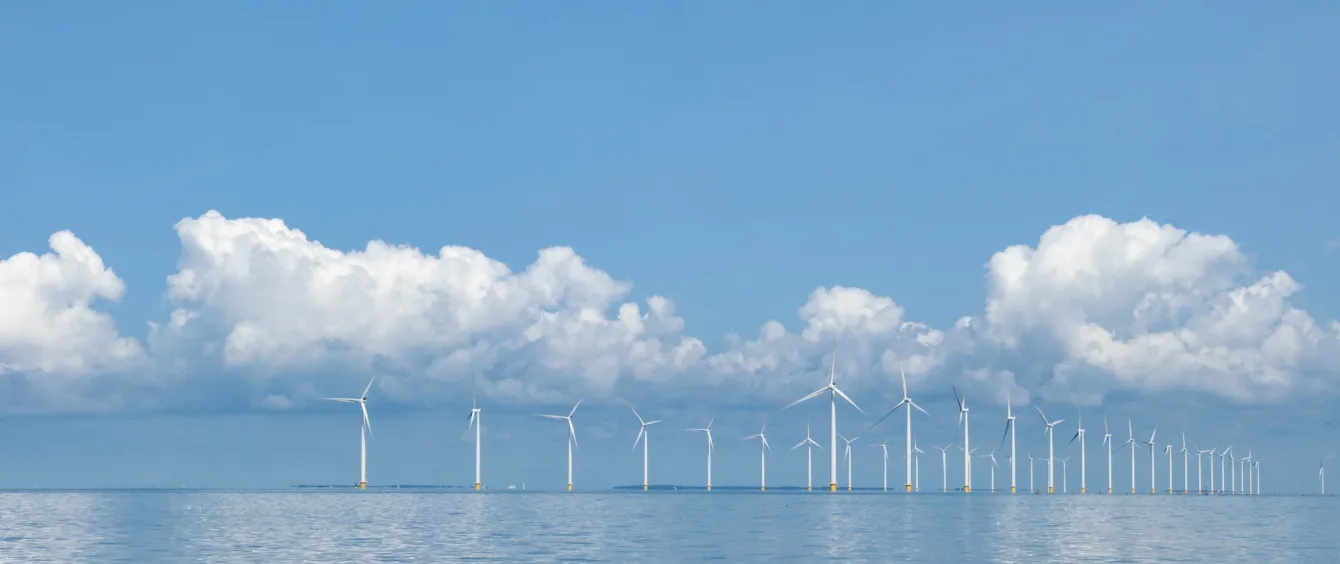The Ostend Declaration of Energy Ministers, signed April 24, saw France, Ireland, Luxembourg, Norway and the UK joined the alliance of Belgium, Denmark, Germany and the Netherlands, which had already existed since May 2022, in setting a new level of ambition for wind power in the North Sea.
Together the countries have combined targets for just under 120 GW by 2030 and together are aiming for at least 300 GW by 2050.
The drivers of this ambition are clear – climate change and security of energy supply. Offshore wind provides clean, variable baseload power on a large scale, complimenting both the volume and generation profile of onshore renewables. It is domestic power, reducing the need for fossil fuels across the power system and bringing ever closer the goal of full power sector decarbonisation.
And there is seemingly no end to the resource in Europe’s windy north.
Higher towers harvest stronger winds, while floating wind farms extend the sea area in which offshore wind farms can be sited. Estimates suggest countries like Ireland could generate many times their own electricity consumption from offshore wind alone, allowing for green power exports as both electrons and in the form of renewable gases and liquids.
The targets set by governments for this energetic sector — large though they may be — are still well within reach of what is technically possible today.
Whole sector growth
The capacity targets will be supported by the development of a ‘meshed’ offshore grid, a concept already initiated by Transmission System Operators (TSOs) in Belgium, Denmark, Germany and the Netherlands. They will be joined by the TSOs of the new signatories to the declaration.
There are, in fact, a host of major transmission and energy island projects underway which will form the meshed offshore grid. Creating clusters of offshore wind farms with interlinked transmission infrastructure connecting multiple markets should reduce costs and enhance power flows between countries.
Other projects include those to demonstrate the viability of offshore hydrogen production from wind power. Germany plans 1 GW of large-scale demonstration projects, while the Netherlands is aiming for a sub-100 MW pilot by 2030 and a 500 MW demonstrator by 2031.
Construction rates need to rise
Achieving the Ostend Declaration targets will not be easy. They imply average annual additions of 13 GW of offshore wind across the nine signatory states through 2030, while the highest-ever yearly addition across the whole of Europe was 4.2 GW, achieved last year, according to data from the International Renewable Energy Agency (IRENA).
That said, the nine signatories include the largest and most dynamic offshore wind sectors in Europe, representing 99% of current installed capacity.
Based on lease area awards and projects already underway, industry association WindEurope’s central projection for new offshore wind capacity suggests 34.1 GW will be built between 2023-2027. This would leave all Europe some 53.5 GW short of the nine-country target with only three years to go.
WindEurope’s forecast assumes growing annual additions each year through this period, but still imply a big further step up in the rate of new installations in the period 2028-2030. Completion of projects in this period will require construction starts some years before, underlining the urgency of near-term action.
Host of actors need to support offshore sector
The ability to achieve the 2030 target depends on multiple factors encompassing a wide range of actors. Government needs to ensure sufficient space is made available to developers via lease awards in a predictable manner; permitting processes must accelerate to move projects from concept to construction; and commercially-viable frameworks for raising project finance are needed, notably for floating wind.
The targets also assume a major expansion of the offshore wind supply chain to deal with the increased volume of orders and the higher call on critical infrastructure from ports to offshore construction vessels.
In particular, the increased size of offshore wind turbines, which deliver economies of scale, presents its own challenges. A shortage of next-generation wind turbine installation vessels is already forecast by WindEurope by mid-decade. Current offshore wind supply chain capacities show “a large gap between current manufacturing capacity and projected demand for the largest [turbine] models,” the association says.
Green ambition to deliver dividends
However, the pay-off should be substantial. The growth of offshore wind will provide the bulk clean electricity needed to facilitate the decarbonisation of industry and heating.
Moreover, consultants Rystad Energy forecast that global employment in the offshore wind sector will triple over the next decade to almost 900,000 full-time jobs. In Europe, the number of jobs in offshore wind is expected to rise from 110,000 in 2020 to about 350,000 by 2030.
